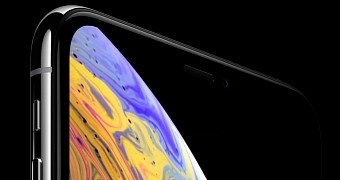iPhone XS and iPhone XS Max both come with OLED screens, as Apple accelerates its transition from LCD, and according to DisplayMate, the latter excels in every single regard.
In a technical analysis of the screen, the group of experts reveals that iPhone XS Max has the best display ever on a smartphone, explaining that it features nearly perfect calibration.
DisplayMate says the iPhone XS Max has the highest absolute color accuracy at 0.8 JNCD, which the company says is “visually indistinguishable from perfect,” the smallest shift in color accuracy with the image content APL, and the lowest screen reflectance at 4.7 percent.
Best phone display ever
Additionally, the 6.5-inch OLED display has the highest full screen contrast rating in ambient light, but also the highest full screen brightness for OLED smartphones, reaching a total of 660 nits.
“Apple has continued to raise the on-screen Absolute Picture Quality and Absolute Color Accuracy of their displays by implementing Precision Factory Display Calibration, moving the overall iPhone XS Max display performance up to Record Setting Outstanding levels, and setting many new Display Performance Records, including Absolute Color Accuracy at a very impressive 0.8 JNCD that is Visually Indistinguishable From Perfect, and almost certainly considerably better than your existing Smartphone, 4K UHD TV, Tablet, Laptop and computer monitor,” DisplayMate says.
“The iPhone XS Max also has a Record High Full Screen Brightness for OLED Smartphones of 660 nits, considerably brighter than most OLED and LCD Smartphones.”
Apple’s new iPhone XS Max has thus earned the DisplayMate Best Smartphone Display Award, receiving the highest ever A+ grade in the company’s research. Its screen is by far better than the one of any other smartphone, the analysis continues.
The group ends by emphasizing that no further screen upgrades are necessary beyond what the iPhone XS Max offers in terms of resolution and PPI, pointing out that improvements in this regard wouldn’t have any visual benefit for humans and it would all become just a marketing strategy.

 14 DAY TRIAL //
14 DAY TRIAL //